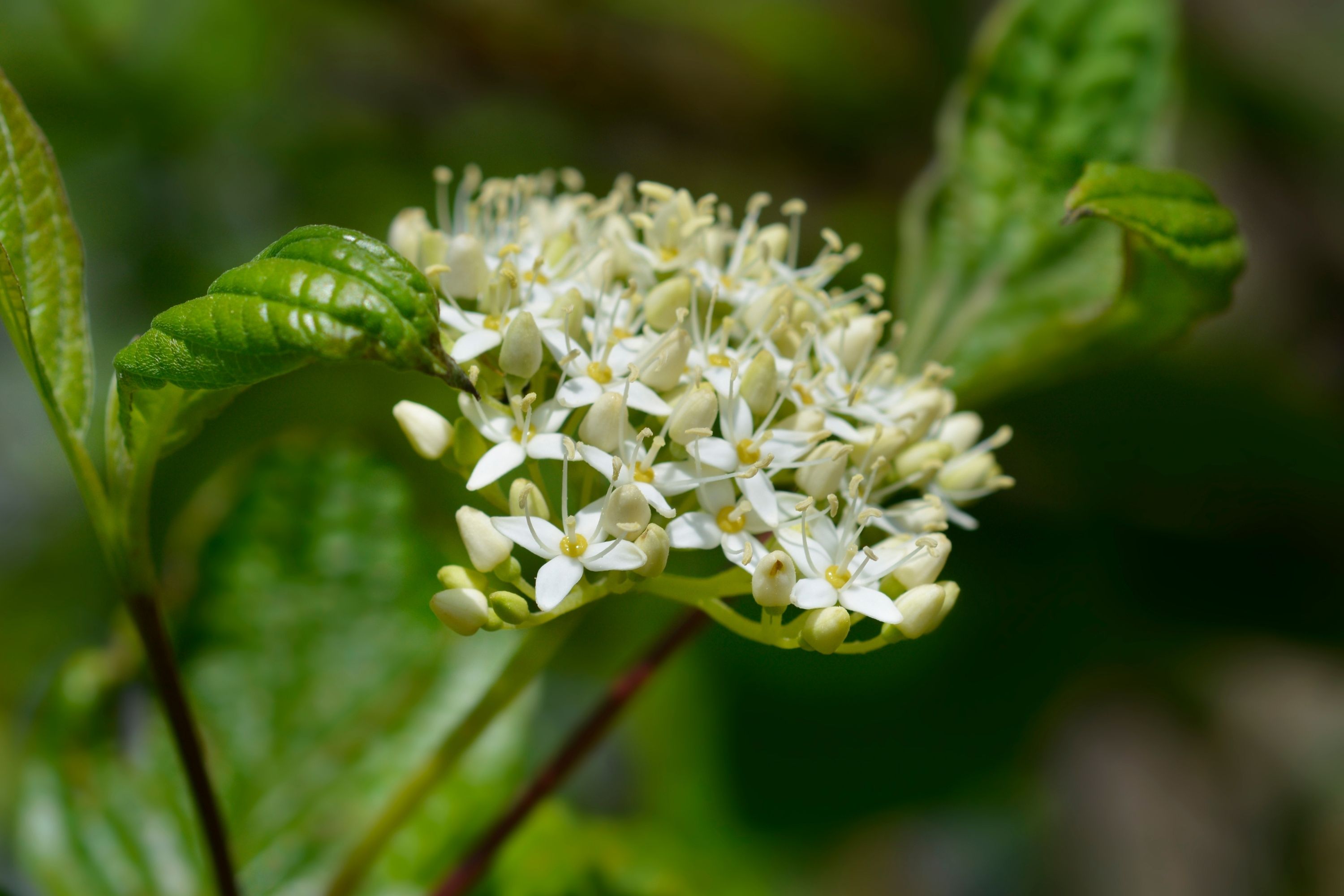Siberian dogwood
(Cornus alba)

Description
Cornus alba, also known as the Siberian dogwood or Tatarian dogwood, is a deciduous shrub belonging to the family Cornaceae. It is native to Northern Asia and parts of Europe, and it is widely cultivated for its ornamental value in gardens and parks. In this article, we will delve deeper into the biology and ecology of Cornus alba, as well as its cultivation and uses in landscaping. Biology and Ecology Cornus alba is a shrub that can reach up to 10 feet (3 meters) in height and spread up to 8 feet (2.5 meters) in width. It has an upright, spreading habit with arching branches that give it a graceful appearance. The bark of the shrub is bright red or yellow and peels off in strips, creating an attractive winter interest. The leaves are simple, opposite, and ovate, with a dark green color that turns reddish-purple in the fall. The shrub blooms in late spring to early summer, producing clusters of small, creamy-white flowers that are followed by clusters of white berries in the fall. Cornus alba is adapted to cold climates and is hardy in USDA zones 2 to 7. It prefers full sun to partial shade and moist, well-drained soils. It can tolerate a wide range of soil types, including sandy, loamy, and clay soils, but it prefers acidic soils. The shrub is relatively drought-tolerant once established but will benefit from regular watering during dry spells. Cornus alba has a shallow root system and can spread by root suckers, forming dense colonies in the wild. It is often found growing along streams, in wetlands, and on moist slopes. The shrub is an important food source for wildlife, including birds, who feed on the berries, and deer, who browse on the foliage and twigs. Cultivation Cornus alba is an easy-to-grow shrub that requires minimal maintenance. It can be propagated by softwood cuttings or by division in the spring. The shrub can also be propagated by seed, but it requires stratification to break dormancy. The seeds should be sown in the fall and left outside to overwinter before germination. When planting Cornus alba, choose a site that receives full sun to partial shade and has moist, well-drained soil. Dig a hole that is twice as wide and as deep as the root ball, and amend the soil with compost or well-rotted manure. Place the shrub in the hole, backfill with soil, and water thoroughly. Mulch around the base of the shrub to retain moisture and suppress weeds. Once established, Cornus alba requires minimal maintenance. Water during dry spells and prune in late winter or early spring to remove dead, diseased, or crossing branches. The shrub can be rejuvenated by cutting back one-third of the oldest stems to the ground every three years. Uses in Landscaping Cornus alba is valued for its ornamental value in landscaping. The bright red or yellow bark provides a striking winter interest, while the white flowers and berries add color to the garden in the spring and fall. The shrub is often used as a specimen plant, a hedge, or a mass planting. It also makes an excellent backdrop for other flowering shrubs and perennials. Cornus alba is often used in wetland restoration and erosion control projects due to its ability to tolerate moist soils and its shallow root system, which helps stabilize slopes. The shrub is also useful for creating wildlife habitat and food sources. In conclusion, Cornus alba is a versatile and easy-to-grow shrub with ornamental value and ecological benefits.
Taxonomic tree:







